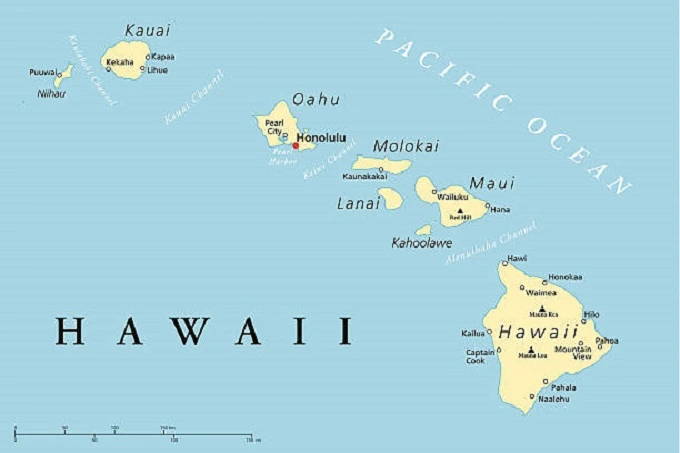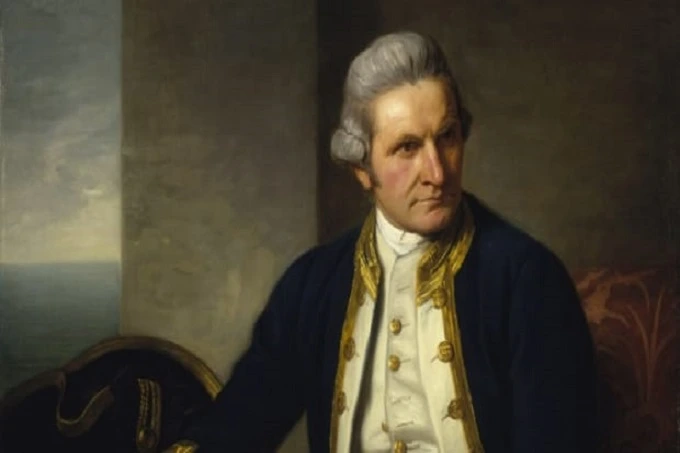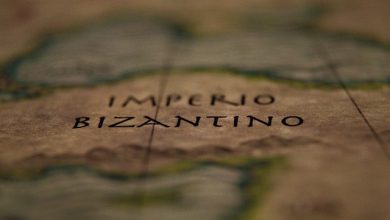How did Hawaii become part of the united states?

Native Hawaiians, similar to Native Americans who inhabited the continental United States before European settlement and American expansion in the 1800s, had a vibrant culture and history in their land. A turbulent history has been experienced by Hawaii and its Native Hawaiian population, beginning with the Spanish–American War and continuing with the subsequent annexation of Hawaii into the United States.
The settlement of Hawaii
The South Pacific was one of the regions of the world that was difficult to access because of how remote it was. Ancient Polynesians used canoes with two ships to travel great distances, including across oceans. Long before Europeans were ready to travel across the Atlantic, the people who lived on the Pacific Islands had reached a very advanced level of proficiency in sailing and navigational techniques. The arrival of the first Polynesian settlers in Hawaii most likely occurred around the year 400.
Because it was so difficult to travel across such a large area, the entire South Pacific region, including Hawaii, wasn’t settled for a thousand years after it was discovered. The traditional boats used by the Polynesians were nimble and lightweight, and they could be rowed even when there was no wind to control the sails. Europeans were astounded by their speed and high-quality construction when they first came across these vessels. Even though the Pacific Islanders did not have a compass, they could still navigate using their own unique techniques. These techniques included determining the position of the setting and the rising sun and keeping track of the amount of time and distance travelled.
It is widely held that people from the Marquesas Islands were the first to settle in what is now known as Hawaii. They brought with them pigs and chickens that had their origins in Asia. By the 1300s, numerous settlements had already spread to sheltered coastal parts of the islands, such as the lush valleys. These settlements were primarily agricultural. Between 1300 and 1500, people started moving into the continent’s interior.
Captain James Cook

Following what is also known as the French and Indian War in North America, the Seven Years’ War elevated Britain to its position as the world’s leading power in Europe. The British government desired to find a way to open up the Northwest Passage, which would connect the Pacific and Atlantic oceans by way of northern Canada. This would allow for improved communication between England and the Pacific Ocean.
Although Captain James Cook did not find such a passage, he was the first white man to land in Hawaii in the winter of 1778. Hostilities broke out in 1779 when the captain returned to Kealakekua Bay to retrieve items he believed had been stolen. At first, the captain was greeted with all the honours attributable to a king. Despite this, the captain’s crew reacted harshly to any perceived aggression or harm from the native peoples. This led to hostilities. Despite all of this, the team reacted harshly. Cook was ultimately put to death as a result of the violent confrontation. In 1784, he had a book titled “The Discovery of Hawaii” published, which sparked interest in Hawaii in both Europe and North America.
When Captain Cook first discovered Hawaii, the islands were governed by warring chiefs at the time. After the death of his uncle in 1782, Kamehameha became one of the most powerful people in Hawaii. He was given control of the territory that had been divided. Kamehameha was able to rally allies and challenge others for control of Hawaiian territory because of his military prowess. This allowed him to assert his authority over Hawaii. By 1790, the civil war had ended, but no one leader had managed to gain control of Hawaii.
After 1790, however, Kamehameha possessed a significant advantage that enabled him to forcibly unite Hawaii by t In the territory that Kamehameha controlled was Kealakekua Bay, which was a port of call for many foreign merchant ships. In addition, he employed fighting dogs, much like the Spanish conquistadors, and hired European artisans to construct a warship for him. Before a power-sharing deal was eventually struck that recognised Kamehameha as the national sovereign, his last remaining rival, the ruler of Oahu, also enlisted the assistance of European advisors. This occurred before the power struggle was resolved.
White Settlement
Despite the misfortune that befell James Cook, other Westerners continued their quest to explore and settle the stunning islands. A sailor from the United States arrived in Hawaii in 1809 and is credited with establishing the first large ranch that was owned by white settlers. Beginning in the 1820s, Christian missionaries from the United States and Europe started making their way to Hawaii to plant their roots. Native Americans across the continental United States were given the same encouragement to adopt Western ideas of private land ownership and permanent farming as their continental counterparts.
The best land, which could then be used productively for farming, was frequently taken by white settlers.
The traditional island system of culture and cuisine was eventually destroyed due to the introduction of white culture and manufactured goods. The Europeans introduced new plantations to Hawaii, such as coffee plantations, pineapple plantations, and mango plantations. Between the years 1820 and 1840, the coffee industry experienced a period of unprecedented growth. In 1848, Ruler Kamehameha III passed legislation that permitted private ownership of land, thereby moving away from the traditional feudal model of land ownership, which was based on inheritance.
Conflation of power
Westerners quickly took advantage of the new system after the Great Mahele of 1848, a legal reform that permitted private land ownership and was also known as the Land Act of 1848. The inability of many indigenous Hawaiians to successfully transform their feudal holdings into new legal holdings allowed white settlers to acquire a significant portion of the more desirable land. Because of this, the wealthy settlers established larger plantations of cash crops like coffee and sugar. As a result of the United States Civil War, the union could not continue importing sugar from the Confederate states, which led to a dramatic increase in the Hawaiian sugar trade.
The United States government had its eyes focused on the Hawaiian Islands as early as the year 1842. In the same year, the Secretary of State wrote a letter to Hawaiian diplomats in Washington, D.C., indicating that the United States was interested in close relations with the young nation and was officially opposed to its annexation by European powers. The Secretary of State sent the letter. This was the same time the independent state of Texas was interested in becoming another state belonging to the United States of America, which it eventually achieved in 1845. During this time period, Texas became a state in 1845. The United States and Hawaii formally established diplomatic relations in 1849.
In 1975, Hawaii and the United States signed the Reciprocity Act, which eliminated the need for duties to be paid on imports from either country. This took place in the year. This resulted in economic benefits and made it possible for the United States government to land in Hawaii, which led to the establishment of Pearl Harbor as a naval base. In the 1870s and 1880s, as the economic exchange between the two nations increased, the United States government took extra precautions to ensure that these growing economic ties were not disrupted in any way.
During the winter of 1893, United States troops assisted in overthrowing the monarchy in Hawaii, even though Hawaii was formally recognised as an independent sovereign state with a diplomatic delegation stationed in Washington, D.C. One year earlier, a group of American and European businessmen had begun planning a coup d’état to overthrow the new Queen Liliʻuokalani if she proposed a new constitution to consolidate her power. If she had done so, they would have succeeded in their goal. The previous constitution, which had been written in 1887, had placed restrictions on the monarch’s power and served the best interests of the people living in the western regions.
In January 1893, a coup d’état took place, and the United States Navy responded quickly by landing sailors and marines in Honolulu to assist. Queen Liliʻuokalani swiftly abdicated the throne to avoid the outbreak of violence, thereby paving the way for the provisional government that the United States supported. Although President Grover Cleveland voiced his opposition to the coup attempt in December of that year, Congress did not take any action, and the provisional government was allowed to continue functioning. In 1894, the new Republic of Hawaii was established, and Sanford Ballard Dole, one of the coup’s organisers, was elected as the country’s first president.
By becoming a republic led by a white president, Hawaii was ripe for annexation by the United States, similar to what had happened to Texas some fifty years earlier. President Sanford went to Washington to personally advocate annexation. The sudden outbreak of the Spanish-American War in the spring of 1998 made Hawaii invaluable to the war hawks, who wanted a strong naval presence in the Pacific. U.S. President William McKinley also wanted to annex Hawaii to prevent the expansion of Japanese domination of the region.
Congress agreed to the annexation and voted for it in the summer of 1898. Under the agreement, Dole became the first governor of the U.S. territory of Hawaii. The status of the U.S. territory was finally determined in 1900. Ballard resigned as governor in 1903 and became a federal district court judge. His younger cousin James Dole moved to Hawaii in 1899 and became famous for the fruit company that bore his last name.
In 1940, as tensions grew in the Pacific due to Japanese aggression against China and other neighbouring countries, U.S. President Franklin D. Roosevelt moved the Navy’s Pacific Fleet from San Diego, California, to Pearl Harbor, Hawaii. Because of Japanese atrocities in China, the U.S. stopped selling oil to the island nation, which had no natural reserves. Seeking oil, Japan decided to launch a major offensive across the South Pacific to seize oil in and near the Dutch East Indies (Indonesia).
The Japanese launched a preemptive strike against the U.S. Pacific Fleet at Pearl Harbor in December 1941. More than two thousand American servicemen and sixty-eight civilians were killed. The battleship USS Arizona was sunk and remained a monument, a reminder of the terrible attack. Overnight, the American public became much more aware of Hawaii and its strategic importance. War was quickly declared on Japan, and soon the U.S. found itself at war with Japan’s allies, Germany and Italy. Unfortunately, many loyal Japanese Americans in Hawaii were temporarily interned for fear that they might assist in hostilities against the United States.
Hawaii Becomes a State
In 1959, the last two states, Alaska and Hawaii, were admitted to the union. After approval by Congress, U.S. President Dwight D. Eisenhower, and Hawaii voters in August, Hawaii became the fiftieth state, which even today continues to serve as the transportation and military centre of the United States in the Pacific Ocean and is a tidbit for tourists. Hawaii’s largest industry is tourism, and the islands are known for their beautiful scenery and pleasant climate.
As a remote chain of islands, Hawaii has a high cost of living, including record-high real estate prices. Another challenge is preserving the native Hawaiian culture in the face of tourist demand and financial pressure from investors and wealthy settlers. Residents hope that Hawaii can preserve its pristine beauty and traditions while enjoying the benefits of modern life and that tourists and visitors will respect the island’s heritage and nature.




